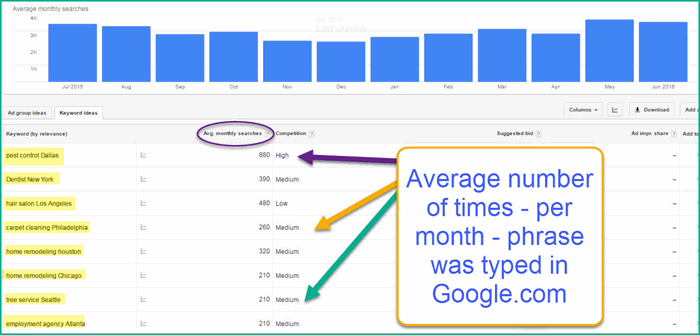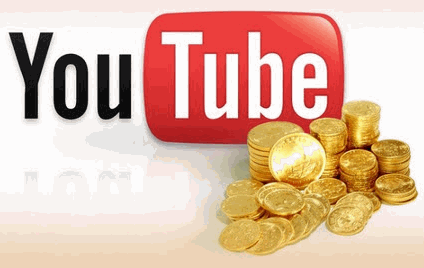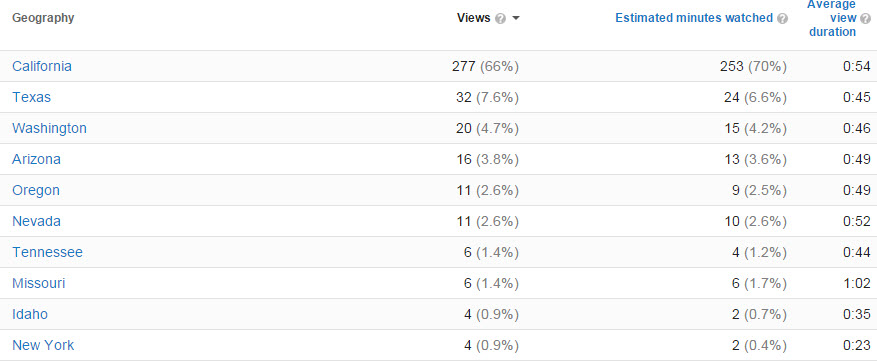
Facebook has been gaining attention for its ever increasing power as a source of video content. It has only been in recent years that Facebook was even thought of as a source for videos. Before, users would upload videos to YouTube and afterwards share those videos to Facebook. However, we’re now seeing that the number of videos that are being uploaded directly to Facebook is climbing. And it’s climbing fast.
In fact, according to SocialBakers, video creators are posting more videos directly to Facebook than YouTube for the first time ever. Most advertisers report that they plan to run video ads on Facebook more so than on YouTube in coming years.
It is obvious that Facebook is increasing its efforts to outdo YouTube in video content. But what does that mean for video marketing? Is it time to forget about YouTube and join in the Facebook craze? Understanding the difference between Facebook and YouTube videos will greatly improve your advertising reach. In this article, we discuss what you need to know about videos on Facebook and YouTube and which to use.
Engagement vs. Individuality
As a major social network, Facebook has a leg up in video competition because it can target specific groups through algorithms. Facebook uses algorithms to decide each user’s interests and put video content directly into their users’ streams. The autoplay feature also allows for videos to play automatically as users scroll through their feed. Because of the autoplay feature, users are drawn to the content without ever having to hit play. Since these features have been added and recently updated, Facebook has generated more desktop video views than YouTube.
Much like Pandora, algorithms are great for those that don’t want to go to the trouble of finding interesting content. Facebook users don’t have figure out what to search for–they’re given engaging content directly in their feed. However, Facebook videos are effective only as long as it can accurately track its users’ interests.
Because of their use of algorithms, Facebook can publish videos that are more engaging to their users than those on YouTube. In recent years, it has become apparent that engagement is more important than just the number of views a video has. Facebook offers 40% more engagement than YouTube. For example, comments and video discussions on Facebook are usually with between friends, not strangers. Users can tag their friends directly in a video. The fact that the videos appear already in the newsfeed also make them more personable, and therefore, engaging.
So what does YouTube have to offer? YouTube is more individualized than Facebook because users get to decide what to watch. Users turn to YouTube when they want to search for and watch specific videos. As with Spotify, the user gets to handpick their interests and are offered suggestions.
Because of this, YouTube is excellent for search engine optimization and driving views. YouTube has over 1 billion users. It’s the world’s 2nd largest search engine. It has a clear advantage over Facebook for videos that are discovered via searching.
Socializing vs. Video Community
While being a social network may allow Facebook to generate more engaging videos, it may hurt their image as being a credible media outlet. Users are used to thinking of Facebook as a social network–a place where they go to chat with friends, post their pictures, and check how many likes they have. They are not, however, used to the idea of opening Facebook to watch ESPN or Taylor’s Swift’s latest music video.
Because Facebook is multimedia oriented and not just focused on video, users will have to form the new habit of thinking of Facebook as a video source and not just a social network. However, as Millennials increasingly turn to Facebook to get their news, they will get used to the social network as a credible source for video. As this occurs, it’s likely that Facebook will drive more video traffic than ever.
For example, Facebook will begin to run original programs from news organizations before they debut elsewhere. It recently showed the premiere of “Game of Thrones”. ABC will launch the program, “Newscast”, a show of 1 minute news updates just for Facebook.
Here YouTube has the greatest advantage because its sole focus is video. Unlike Facebook, users aren’t turning to YouTube for social networking. YouTube has had years of video publishing in comparison to the only recent competition of Facebook. Because of this, YouTube has built up its own faithful community of media companies and independent video creators that are dedicated solely to its channels. Over the years, YouTube has been able to build up lots of partners to distribute their videos. Apps are available for most mobile devices and TVs at home while Facebook isn’t as advanced with video apps on some of the new devices. However, as Facebook’s video influence continues to grow, we’re likely to see future Facebook TV apps.
YouTube links can be shared anywhere, whereas Facebook videos cannot be shared outside of the network. And while Facebook’s videos may be more engaging, YouTube videos are the most effective in increasing awareness and purchase decisions.
Who Wins?
Both sites recognize their strengths and capitalize on them. The clearest distinction between Facebook and YouTube videos is their intended purpose. Because Facebook is a social network, it publishes videos that rely primarily on their social reach. This means that Facebook videos are generally short, funny, and will gain attention quickly. Then, the video is long gone once it’s out of the news feed. YouTube, on the other hand, knows that it is the source for videos that will be searched out and watched time and time again. They invest in long term creators and publish content, such as tutorial videos, that will continue to get attention over time.
In short, Facebook video relies heavily on the social influence that is found on its network while YouTube will always be the source for videos that stick around. Both Facebook and YouTube are generating video success, just in different ways.
What This Means For You
So what does all of this have to do with your video marketing strategy? Knowing the difference between Facebook and YouTube video will help you capitalize on the apparent gap between the two.
It’s time to take advantage of these new changes and make your own plan. There’s no need to completely abandon YouTube and focus all of your video attention on Facebook. Instead, using YouTube to reach new people will help your videos get discovered in the long run. On the other hand, using Facebook video will allow your company to engage better with your audience.
First you need to decide where your content falls–whether it’s more appropriate for Facebook or YouTube and then create a strategy accordingly. For example, if your strategy is to drive the most traffic to YouTube, you might model after some and make short and catchy Facebook trailers. The trailer will grab attention for a short time on Facebook and then link your audience over to your YouTube page for a more in-depth video. This kind of plan would be taking advantage of the fact that Facebook will gain social attention for your company, and YouTube will provide the actual content.
If your video isn’t quite that simple, then try adding content to both platforms until you find what strategy is best for you. Either way, it’s clear that both Facebook and YouTube are necessary for your video marketing campaign’s success.








![Professional HD video camera. Shallow DOF, selective focus. [url=file_closeup.php?id=11425979][img]file_thumbview_approve.php?size=1&id=11425979[/img][/url] [url=file_closeup.php?id=11426632][img]file_thumbview_approve.php?size=1&id=11426632[/img][/url] [url=file_closeup.php?id=11426248][img]file_thumbview_approve.php?size=1&id=11426248[/img][/url] [url=file_closeup.php?id=11872101][img]file_thumbview_approve.php?size=1&id=11872101[/img][/url] [url=file_closeup.php?id=11872387][img]file_thumbview_approve.php?size=1&id=11872387[/img][/url] [url=file_closeup.php?id=10599371][img]file_thumbview_approve.php?size=1&id=10599371[/img][/url] [url=file_closeup.php?id=10547903][img]file_thumbview_approve.php?size=1&id=10547903[/img][/url] [url=file_closeup.php?id=11872180][img]file_thumbview_approve.php?size=1&id=11872180[/img][/url] [url=file_closeup.php?id=11872499][img]file_thumbview_approve.php?size=1&id=11872499[/img][/url] [url=file_closeup.php?id=10557032][img]file_thumbview_approve.php?size=1&id=10557032[/img][/url] [url=file_closeup.php?id=10552621][img]file_thumbview_approve.php?size=1&id=10552621[/img][/url] [url=file_closeup.php?id=10546832][img]file_thumbview_approve.php?size=1&id=10546832[/img][/url] [url=file_closeup.php?id=10552602][img]file_thumbview_approve.php?size=1&id=10552602[/img][/url] [url=file_closeup.php?id=10551857][img]file_thumbview_approve.php?size=1&id=10551857[/img][/url] [url=file_closeup.php?id=10555552][img]file_thumbview_approve.php?size=1&id=10555552[/img][/url] [url=http://www.istockphoto.com/file_search.php?action=file&lightboxID=1049019][img]http://santoriniphoto.com/Template-Modern-technology.jpg[/img][/url] [url=file_closeup.php?id=14440031][img]file_thumbview_approve.php?size=1&id=14440031[/img][/url] [url=file_closeup.php?id=14353591][img]file_thumbview_approve.php?size=1&id=14353591[/img][/url] [url=file_closeup.php?id=11872290][img]file_thumbview_approve.php?size=1&id=11872290[/img][/url]](https://aprofitableday.com/wp-content/uploads/2015/07/iStock_000015336905Medium.jpg)



















